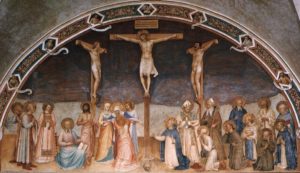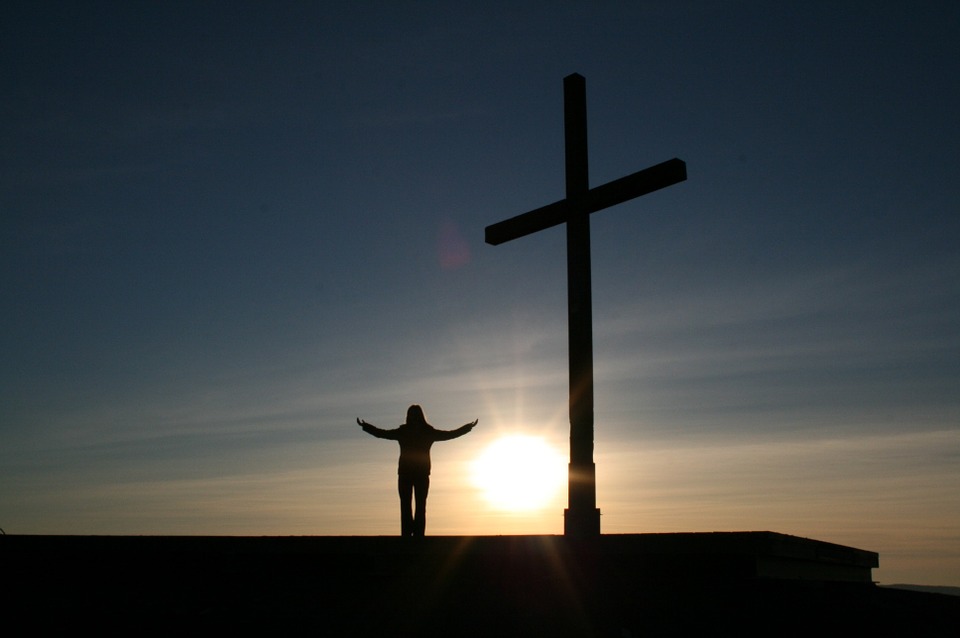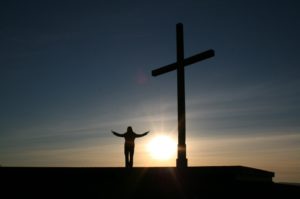At my Question and Answer Column at the Sunday Visitor I was recently asked the following question. I hope you might find the answer informative and encouraging. Fight on, soldiers of the Cross.
The phase “Non serviam” has been associated with Satan and his response to God when being cast from heaven in a war. Is this in the Bible? If not, where did this come from? -Deacon Paul VanHoudt, Erie, CO
The declaration “non serviam” (I will not serve) is associated with Satan by legend; it is not in the Bible. But it is the fundamental stance of all demons who, on account of pride, will not obey, will not be ‘told what to do.’ It is also the chief temptation that Satan made to Adam and Eve, namely, that they should not let God tell them what to do and that they should be like gods (cf Gen 3:1-4).
As for the war in heaven that you mention, there is a tradition that a war occurred in heaven when Lucifer (Satan) rebelled at God’s plans for the Incarnation. This war was fought long before the biblical era, but its exact timeframe is not clear. It is said that a third of the Angels joined Lucifer in this rebellion. St. Michael and the good angels fought back, and Lucifer and his allies were cast out of heaven and fell to earth. They became “demons.” This is the traditional backstory most often repeated.
In the Book of Revelation, a war in heaven is mentioned which includes some, but not all these details. Further it seems the war in Revelation 12 has transhistorical qualities, encompassing not the past only, but also the First Century and the future. The passage describes “A Woman clothed with the Sun” who gives birth to a Son, destinated to rule the nations with an iron rod (Rev 12:1-2,5). Clearly this Son is Jesus and, historically, the Woman is Mary, though some argue she is also an allegory for Israel, from whom the Messiah came forth. Whatever the case, a red dragon with seven heads and ten horns (Satan) seeks to devour the child when it is born. But the Son escapes and is caught up to heaven (Rev 12:3-4). Is this a reference to the Ascension of Christ? Is all this a prophecy seen by the angels well beforehand or, is it describing the historical event of the Incarnation that had just recently taken place in the First Century? In either case, at this point in the text from Revelation it says,
Then a war broke out in heaven: Michael and his angels fought against the dragon… But the dragon was not strong enough, …and the great dragon was hurled down—that ancient serpent called the devil and Satan, the deceiver of the whole world. He was hurled to the earth, and his angels with him. (Rev 12:7-9)
So, is the war described in Revelation, the war that took place in heaven long before the Book of Genesis and that explains the presence of Satan in the garden? It would seem so, but since Revelation 12 places everything in a murky timeframe there are debates about this. In a way it doesn’t matter since the great battle is epochal, constantly at work until the last judgment. Christ has won the war, his victory is “already but not yet.” That is to say, the outcome of the war has already been determined, but not everyone across all history has taken sides yet.
Clearly the upshot of all this is that we should choose the winning team! At times, in this warzone of the fallen world, it may seem that evil triumphs and the Kingdom of God is on the ropes. Yet appearances can be very deceiving. Remember, Good Friday is just as much a part of the victory as the Resurrection. But the final outcome is that Satan and all those who prefer the prideful non serviam of Hell and Satan will be cast down into the fiery pool, never again to deceive the nations or ensnare God’s people. The echo of the final victory hymn is heard in Revelation 12:10ff: For the accuser of our brothers has been thrown down—he who accuses them day and night before our God. They have conquered him by the blood of the Lamb and by the word of their testimony. Therefore rejoice, O heavens, and you who dwell therein.
So, whatever you think is going on, this is what is really going on. We are at war, a terrible war indeed. But the victory is already ours through faith, courage and the Blood of the Lamb. Stay faithful unto death!






